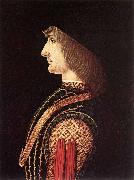China al por mayor de Marco de Oleo |
|||||||||||

|
|||||||||||
|
|
|
||||||||||||||
|
Giovanni Battista Pittoni
Giambattista Pittoni (June 6, 1687-November 6, 1767) was an Italian painter of the late-Baroque or Rococo period, active mainly in his native Venice. Pittoni was born in Venice, and studied painting under his uncle Francesco Pittoni and Antonio Balestra. Little is known of his early career. He entered the Venetian painters' guild in 1716. In 1722-1723, he was commissioned to paint eThe Torture of St Thomase for San Stae in Venice, which also contains one if his later works in its sacristy. He also completed the transit of Santa Maria in Organo in Verona in 1725. In 1727, he was appointed honorary Academician of the Accademia Clementina in Bologna. In subsequent years, Pittoni never left his native Venice, but completed a number of important and lucrative commissions from German, Polish, Russian, Italian and Austrian patrons, including eThe Sacrifice of Jephthah's daughtere for the Royal Palace of Turin, a number of works for the Marshal von Schulenburg, and a eMartyrdom of St Batholomewe for the Basilica of Saint Anthony of Padua. Pittoni came to be known for his "grand-manner" canvases depicting religious, historical, and mythological subjects (such as Sophonisba and Polyxena). By 1740, he established a studio and residence in the San Giacomo district of Venice, and took on numerous apprentices. Pittoni died at age 80 on November 6, 1767. His tomb is at the church of San Giacomo dall'Orio in Venice. Pittoni was a co-founder of the official painter's academy in Venice (in competition to the old fraglia or painter's guild), the Accademia di Belle Arti di Venezia, and he succeeded as President (1758-1761) his contemporary Giovanni Battista Tiepolo. His mature palette was noted, as was Tiepolo's, for his lightness of tone. Besides Tiepolo, Pittoni's influences were Giovanni Battista Piazzetta, Sebastiano Ricci, and Antonio Balestra. His paintings were of a Rococo style, but later became more sedate in their approach towards Neoclassicism. |
||||||||||||||
|
|
||||||||||||||
|
||||||||||||||
|
|
||||||||||||||
| Giovanni Battista Pittoni
Giambattista Pittoni (June 6, 1687-November 6, 1767) was an Italian painter of the late-Baroque or Rococo period, active mainly in his native Venice. Pittoni was born in Venice, and studied painting under his uncle Francesco Pittoni and Antonio Balestra. Little is known of his early career. He entered the Venetian painters' guild in 1716. In 1722-1723, he was commissioned to paint eThe Torture of St Thomase for San Stae in Venice, which also contains one if his later works in its sacristy. He also completed the transit of Santa Maria in Organo in Verona in 1725. In 1727, he was appointed honorary Academician of the Accademia Clementina in Bologna. In subsequent years, Pittoni never left his native Venice, but completed a number of important and lucrative commissions from German, Polish, Russian, Italian and Austrian patrons, including eThe Sacrifice of Jephthah's daughtere for the Royal Palace of Turin, a number of works for the Marshal von Schulenburg, and a eMartyrdom of St Batholomewe for the Basilica of Saint Anthony of Padua. Pittoni came to be known for his "grand-manner" canvases depicting religious, historical, and mythological subjects (such as Sophonisba and Polyxena). By 1740, he established a studio and residence in the San Giacomo district of Venice, and took on numerous apprentices. Pittoni died at age 80 on November 6, 1767. His tomb is at the church of San Giacomo dall'Orio in Venice. Pittoni was a co-founder of the official painter's academy in Venice (in competition to the old fraglia or painter's guild), the Accademia di Belle Arti di Venezia, and he succeeded as President (1758-1761) his contemporary Giovanni Battista Tiepolo. His mature palette was noted, as was Tiepolo's, for his lightness of tone. Besides Tiepolo, Pittoni's influences were Giovanni Battista Piazzetta, Sebastiano Ricci, and Antonio Balestra. His paintings were of a Rococo style, but later became more sedate in their approach towards Neoclassicism. circa 1500(1500) Medium oil on panel cyf |
||||||||||||||
|
Related Paintings to Giovanni Battista Pittoni :. |
||||||||||||||
|
|
||||||||||||||
|
|
||||||||||||||
|
CONTACTE EEUU |







